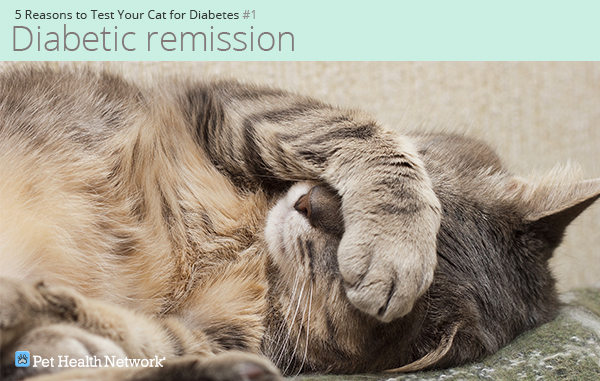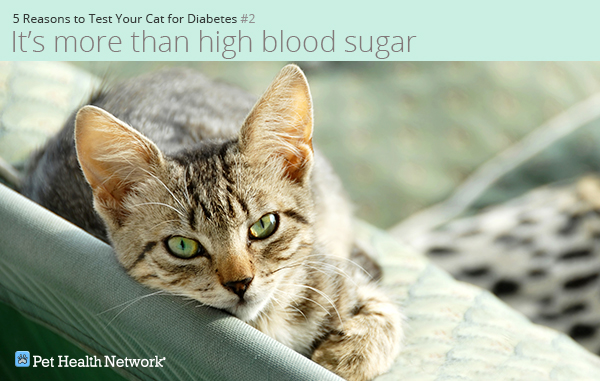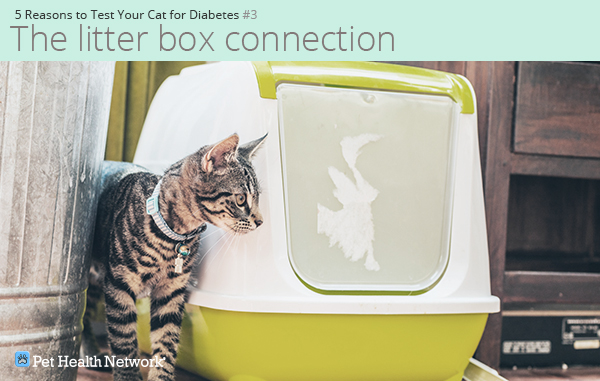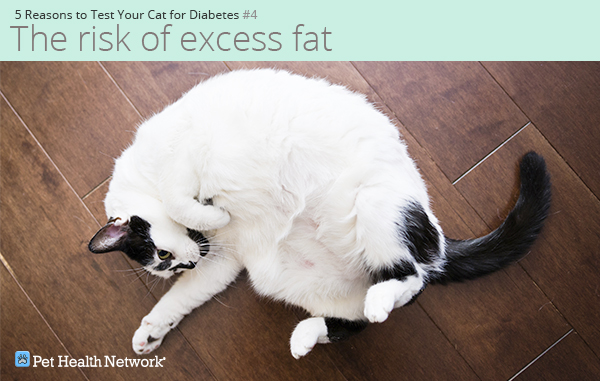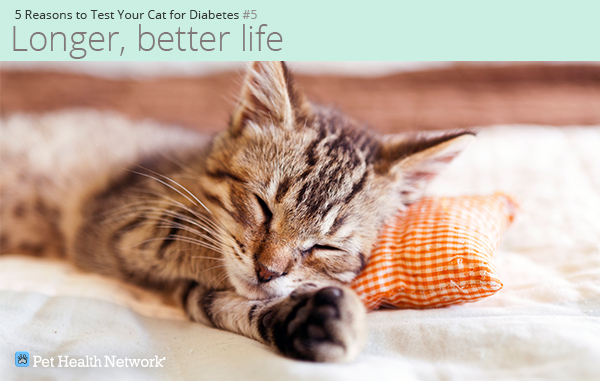One of my least favorite diagnoses to make in cats is diabetes. I have a deep dislike for feline diabetes because of two indisputable facts:
1) It’s largely preventable and unnecessary
2) It’s a real challenge to treat for many owners
Fortunately, diabetes is also one of those diseases that benefits from early detection. I’d like to share my top five reasons you need to test your cat early and often for diabetes:
One of the most interesting aspects of feline diabetes is its potential reversibility or remission, especially when diagnosed in the earliest stages. Over the past twenty-three years, I’ve seen scores of kitties weaned off insulin when diagnosis and treatment was initiated quickly. Research has shown up to 60% of cats will experience diabetic remission within the first few months of treatment, reports Alice Huang (VMD, DACVIM) from Purdue University. Combining strict blood sugar regulation with precise insulin therapy, changes in diet and weight loss are a recipe for reversing diabetes in many cats. Some cats will remain diabetes-free for many months to years. My advice is to have blood work and urinalysis performed yearly, twice yearly if you have a flabby feline.
[Check out how an early diabetes diagnosis saved Dr. Paul's cat.]
Many cat owners focus solely on blood sugar levels. That's good, but too often we forget the continuous and severe damage hyperglycemia is causing throughout the body. The longer diabetes goes unchecked, the more potentially irreversible damage occurs. Prolonged high blood sugar levels can lead to nerve damage (diabetic neuropathy that typically causes weakness in the rear legs), chronic infections (especially urinary tract and skin), and loss of lean muscle mass resulting in weakness and wasting. It's well recognized that untreated diabetes may cause a life-threatening emergency condition known as diabetic ketoacidosis.The sad reality is that too many cat owners fail to recognize diabetes until their cat has lost a tremendous amount of weight. Early diagnosis can preserve precious vital tissues and prolong health.
Let's face it, most cat owners rarely see their cat drinking water. That’s perfectly normal because, well, cats don’t drink that much in the first place. This means looking out for the classic diabetic symptom of “excessive thirst” in cats is harder. A better sign to look for is more frequent urination and wetter, heavier litter. If you suddenly notice you have to change the litter box more frequently, get your cat checked out immediately. While we’re talking about urination, if your cat suffers from chronic urinary tract infections, be sure to ask your veterinarian about screening for diabetes. One final “pee-note:” diabetes should always be ruled-out in cases of inappropriate elimination such as “accidents” on the bed or rugs. Unfortunately I’ve seen one too many cats misidentified with a “behavior problem” when the correct cause was a disease such as diabetes.
[Here are more reasons your cat may be peeing too much.]
I've hinted more than a few times about the link between excess fat and diabetes in cats, and the authors of the AAHA Diabetes Management Guidelines for Dogs and Cats support this thinking. The fact is that fat cats are at a much higher risk of developing diabetes than a lean cat. Diabetes is a disease commonly created at the food bowl. If your cat is overweight or obese, have him screened for diabetes twice a year. Blood tests are best, but even a simple urinalysis can reveal diabetes. The great news is that when diagnosed early and weight loss programs are implemented, many cats will undergo diabetic remission – if identified early.
[Learn 5 reasons why pet obesity is a serious problem.]
The real reason to test your cat early and often for diabetes is to prolong a high quality of life. Too many times I’ve examined a frail four-and-a-half pound feline that could’ve been saved – two pounds earlier. The American Association of Feline Practitioners also warns that cats being diagnosed with diabetes are increasing. Don’t delay seeing your veterinarian if your cat is drinking or urinating more, has “accidents” in the house, suddenly changes eating habits, or inexplicably loses weight.
While it’s true feline diabetes is one of my least favorite diagnoses, it’s also true that when I have the opportunity to detect it early, my spirit is lifted just a bit. The only way I can identify diabetes promptly is through regular screening at least once or twice a year. It’s up to you; allow your vet to test your feline early and often. Together we can help your cat live a long, healthy, and happy life.
If you have any questions or concerns, you should always visit or call your veterinarian -- they are your best resource to ensure the health and well-being of your pets.

